DONALD MACDONALD
1516 Folsom St.
San Francisco, CA
94104, USA
Donald MacDonald Architects LLC
DONALD MACDONALD
1516 Folsom St.
San Francisco, CA
94104, USA
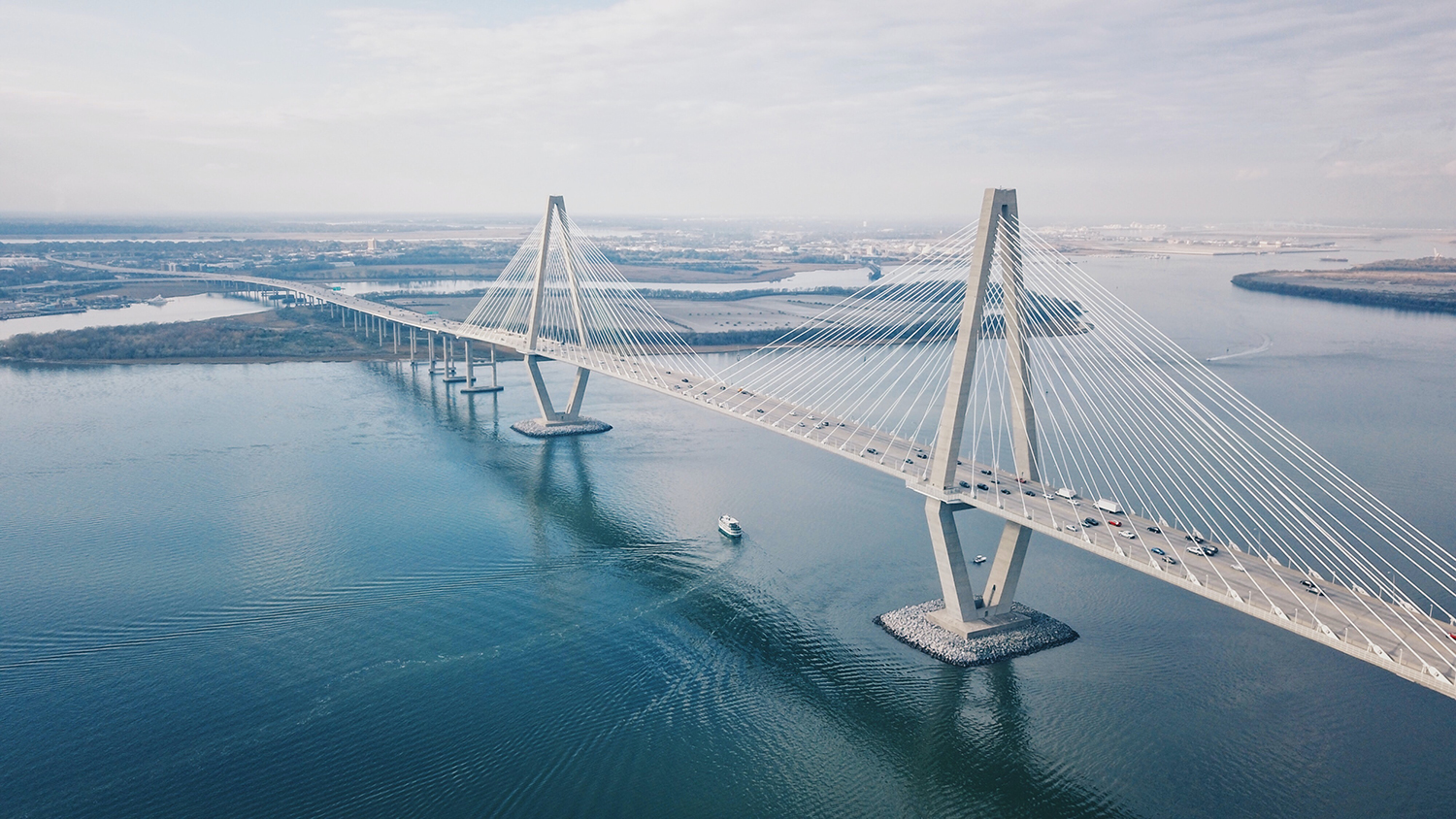
Charleston, South Carolina
Donald MacDonald Architects’ acted as project architect for the Arthur Ravenel Jr. Bridge (Cooper River Bridge), a local monument and gateway that connects the City of Charleston’s historic downtown to Mount Pleasant.
Its soaring 575-foot tall twin towers support a 1,546-foot main span that was the largest cable-stayed bridge in North America at the time of its construction. With over 77,500 daily vehicle trips, the bridge supports four traffic lanes in each direction, complemented by a 12-foot wide bicycle and pedestrian path.
Donald Macdonald Architect’s scope included site planning, developing the selected structural concept with engineering partners, architectural details, architectural renderings, as well as substantial community outreach. Donald MacDonald Architects coordinated and prepared presentations for the state, county, and city agencies, utilities, neighbors, environmental organizations, and the local bicycle coalition.
Client – South Carolina Department of Transportation
Location – Charleston, South Carolina
Timeline – 1995-2005
Bridge Engineer – WSP, HDR
Overall Length – 13,200′
Type – Cable Stayed Bridge
Main Span – 1,546′
Spans – 11 water spans
Deck Width – 128′
Tower Height – 575′
Cost – $531M
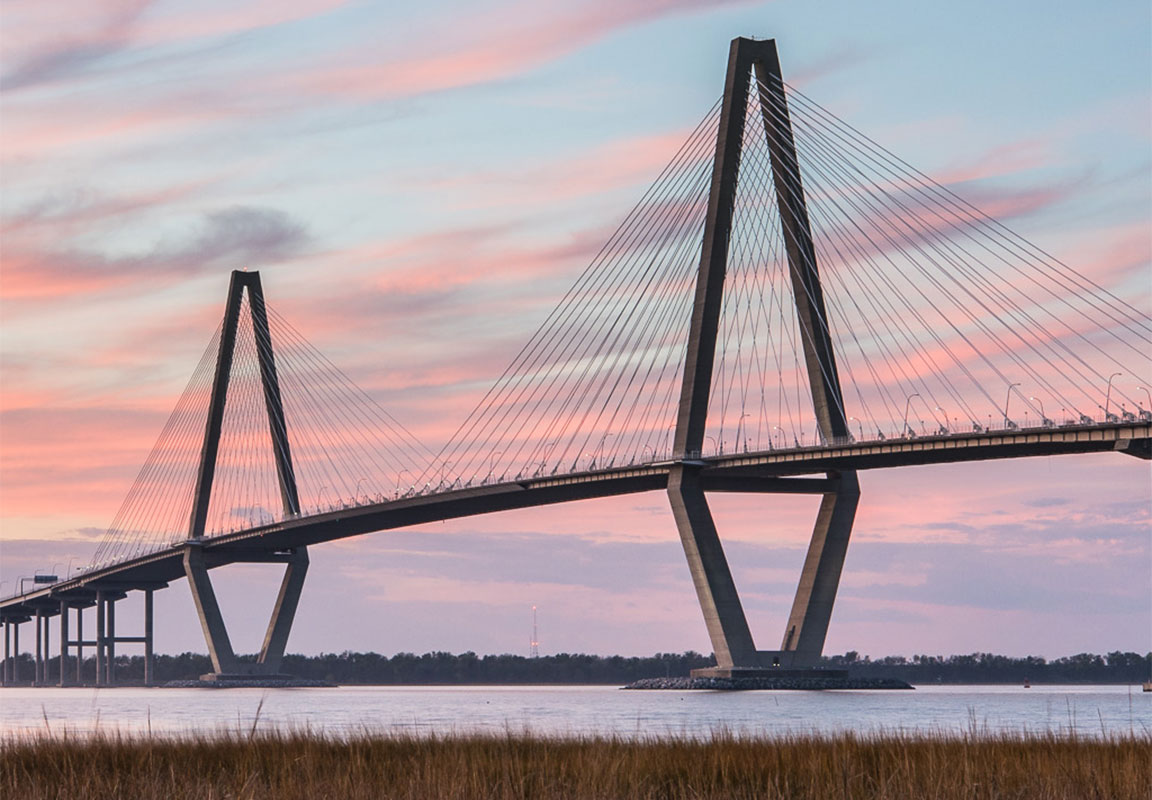
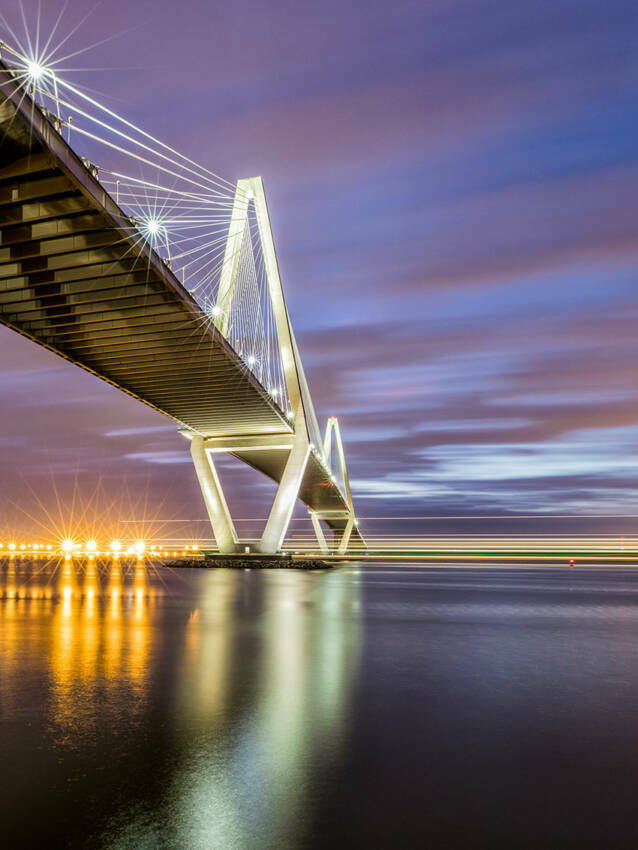
The bridge architecture creates a timeless landmark that pays homage to the City of Charleston and compliments the harbor and waterfront park. Donald MacDonald worked to imbue the structure’s form and elements with grace and well-crafted design.
The bridge evokes a sail motif over the river, a view users can perceive when walking or driving. The slender concrete proportions of the single tower scheme reflect the elegance of the City of Charleston. Like the mast of a ship, these proportions were derived by consistently tapering the tower from the base to the top. Additionally, the towers are sculpted to appear as refined monuments, seemingly cut from a single block of stone. Accentuating these towers are light pipes, positioned at the apex to reinforce the tower’s diamond shape. The lights reinforce the bridge axis and enhance the view of the cables at night.
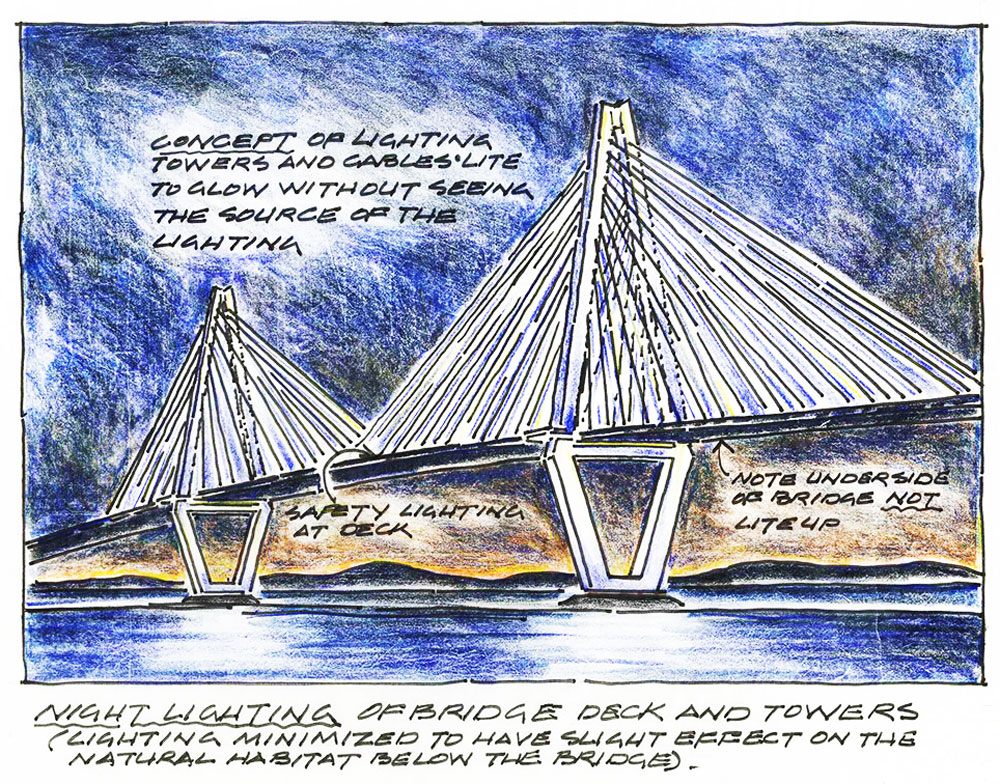
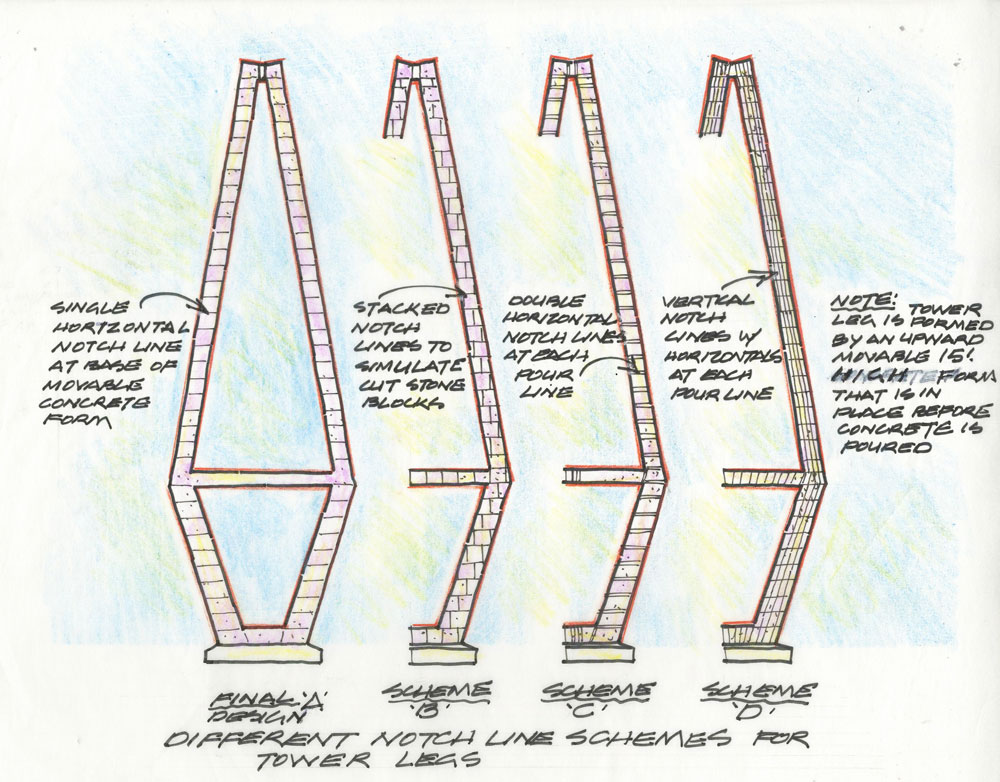
Delivered as a Design/Build procurement, the bridge was designed to meet the challenging wind, naval, and earthquake conditions, while maintaining safety and mobility for the traveling public, and preserving the area’s scenic, aesthetic, historic, and environmental resources.
The bridge was one of the first major design-build projects in the United States. As such, the bridge’s design-build process incorporated substantial community outreach, including numerous stakeholder and public presentations, and collaboration sessions where public feedback was elicited.
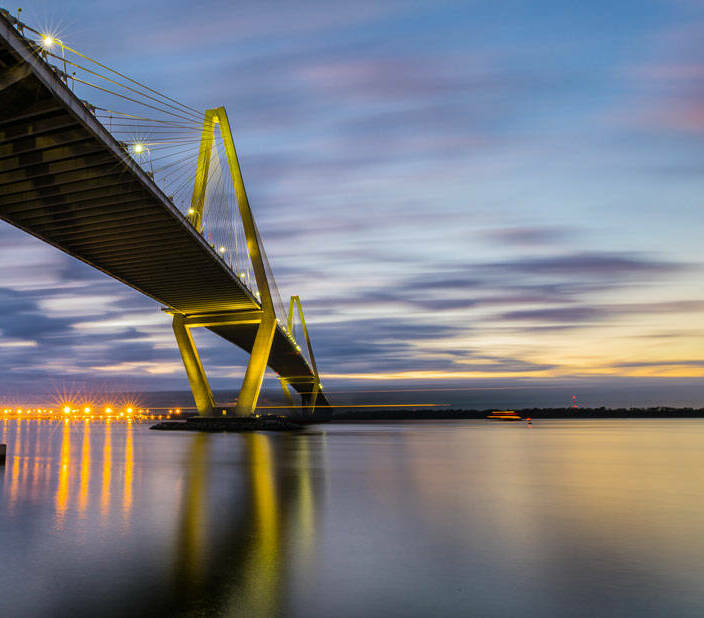

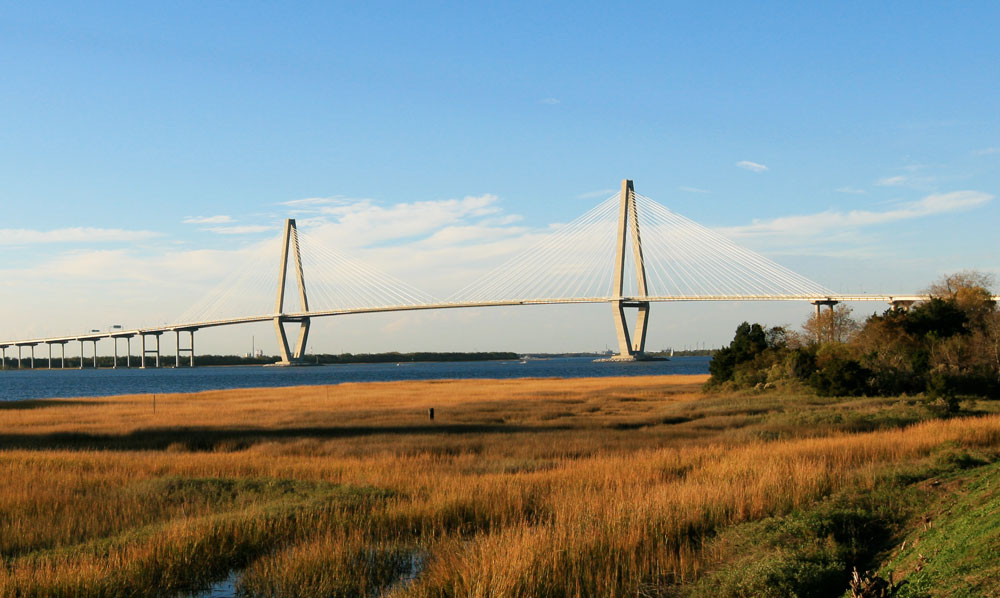
DONALD MACDONALD
1516 Folsom St.
San Francisco, CA
94104, USA
